The sky above Jeju Island is clear and blue, unlike Seoul where smog, skyscrapers, traffic pollution and sleek geek technology reign supreme. For South Koreans, this is the place to go to escape from the city, not only for its clean air but also because there are plenty of things to do on Jeju Island.
They call it samdado: the island of rock, wind and women. Korea’s largest island has stunning natural treasures and was voted as one of the final 28 destinations to compete for a spot in the New Seven Wonders of Nature list. You’ll feel like you’ve stumbled upon a paradise, where loving honeymooners wander around hand in hand.
Jeju Island’s first contact with the western world was in 1653 when a Dutch United East Indian Company ship washed up along the coastline.
The ship’s crew was captured and – like the characters in James Clavell’s novel Shogun – the crew played roles in Korean society and politics. Some become bodyguards to the emperor.
- 20 Famous Landmarks in South Korea
- 20 Things To Do In South Korea
- 20 Best Beaches In South Korea
- 35 Things To Do in Seoul
- 20 Seoul Day Trips
- 20 Things To Do In Jeju Island
- 10 Things To Do In Gyeongju
- Andong Mask Dance Festival
- Jirisan National Park
- Korean Temple Stay Experience
- Seoul At Night
- 20 South Korean Cities
- Winter In Korea – 20 Things To Do
Contents
- Jeju Island
- 20 Things to Do On Jeju Island
- 1- Hike Seongsan Ilchubong Peak
- 2- Explore Cheonjeyeon Waterfall
- 3- Hike Mount Hallasan
- 4- Look For Stone Grandfathers
- 5- Visit Seongeup Folk Village
- 6- Explore Jeju Love Land
- 7- Visit The Teddy Bear Museum
- 8- Learn About Bonsai at Spirited Garden
- 9- Visit The Green Tea Museum
- 10- Hike The Gosalli Forest Trail
- 11- Go Diving At Diveland
- 12- See The Exhibits At The Jeju Aerospace Museum
- 13- Go To The Beach
- 14- Learn About The Culture of Jeju Haenyo
- 15- Play A Round of Golf
- 16- Jeju 4.3 Peace Park
- 17- Escape To The Jungle At Eco Land Theme Park
- 18- Be Enchanted By The Jeju Glass Castle
- 19- Explore UNESCO World Heritage Caves
- 20- Visit the Da Vinci Museum
- Where is Jeju Island?
- Jeju Island Accommodation
- 20 Things to Do On Jeju Island
Jeju Island
20 Things to Do On Jeju Island
1- Hike Seongsan Ilchubong Peak
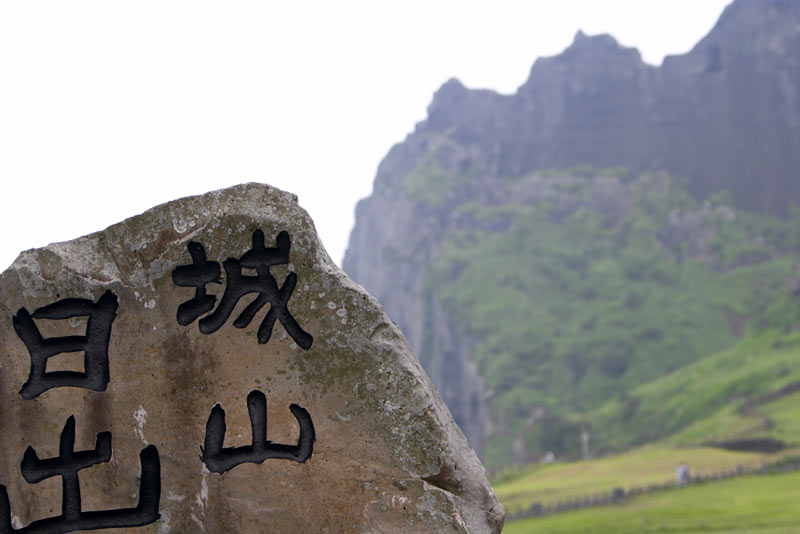
Take a drive to Seongsan Ilchubong Peak at the easternmost tip of the island where sharp rocks surround the crater-like a crown.
It’s a comfortable hike to the lookout up seemingly never-ending concrete steps but the effort is worth it and we’re rewarded with sweeping panoramic views of the coastline.
2- Explore Cheonjeyeon Waterfall
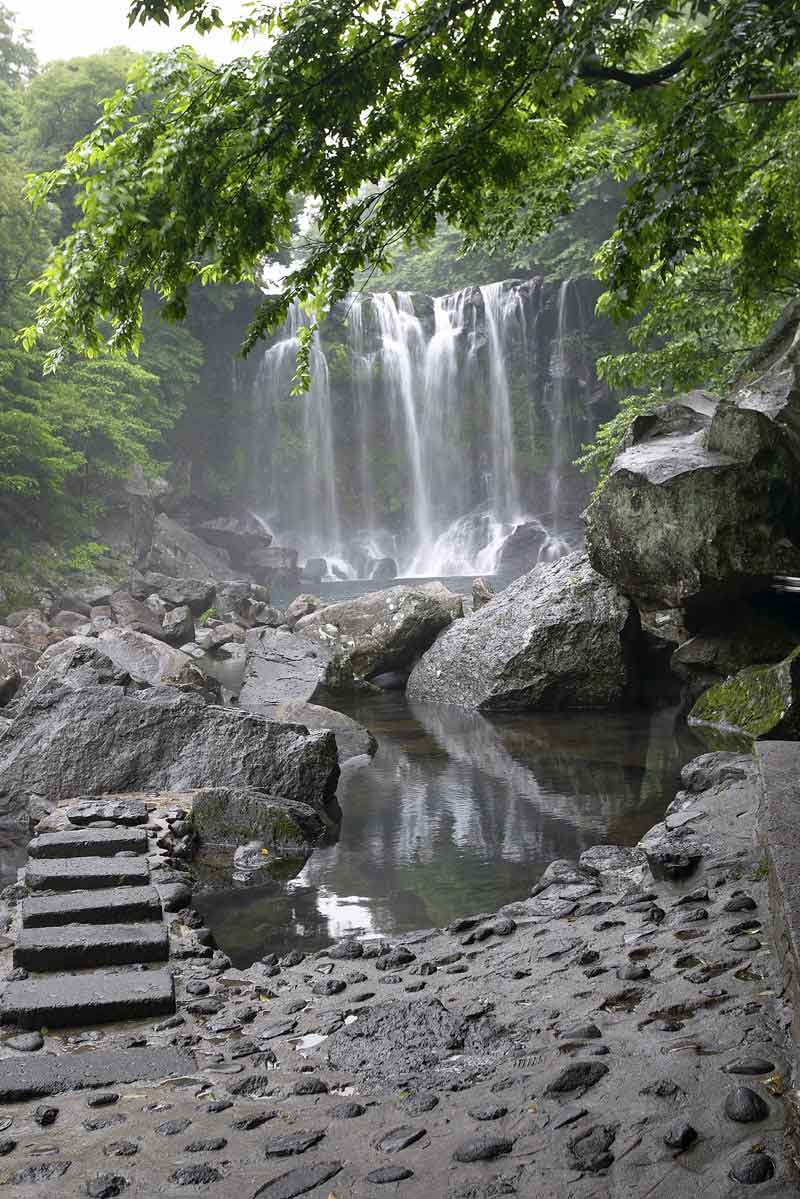
Feel the mist on your face as you clamber over grey moss-grown rocks at Cheonjeyeon Waterfall.
Surrounded by lush green forest, this section of Jeju Island’s three-tiered Cheonjeyeon Waterfall is so scenic I could almost imagine water nymphs frolicking in the rock pools.
3- Hike Mount Hallasan
The “thickly wooded high mountain”, Mount Hallasan, is a popular hiking spot for mountain-loving South Koreans.
At 1950 metres high, the extinct volcano is Korea’s highest peak and has several walk trails with sweeping views of the island down to the coastline.
4- Look For Stone Grandfathers
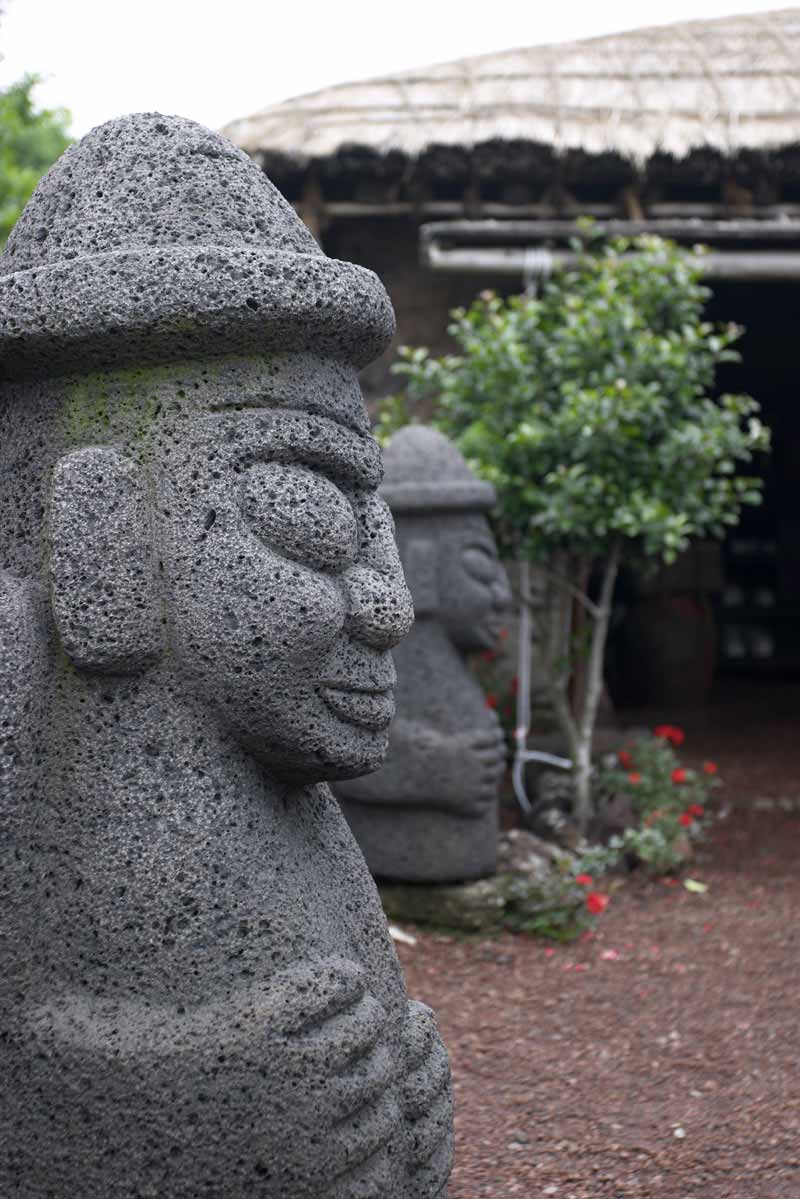
As you head to the foot of Mount Hallasan, you’ll drive past hectares of tangerine orchards and low-roofed huts.
Many homes have satellite dishes mounted on the ground nearby and long stone walls built with holes for the strong winds to blow through.
Every home or village has a pair of life-sized dolhareubang or stone grandfather.
The rock statues with large protruding eyes are placed at entrances to ward away evil spirits.
Bukchon Dol Hareubang Park is a good place to see these at 70, Bukchonseo 1-gil, Jeju-si, Jeju-do.
5- Visit Seongeup Folk Village
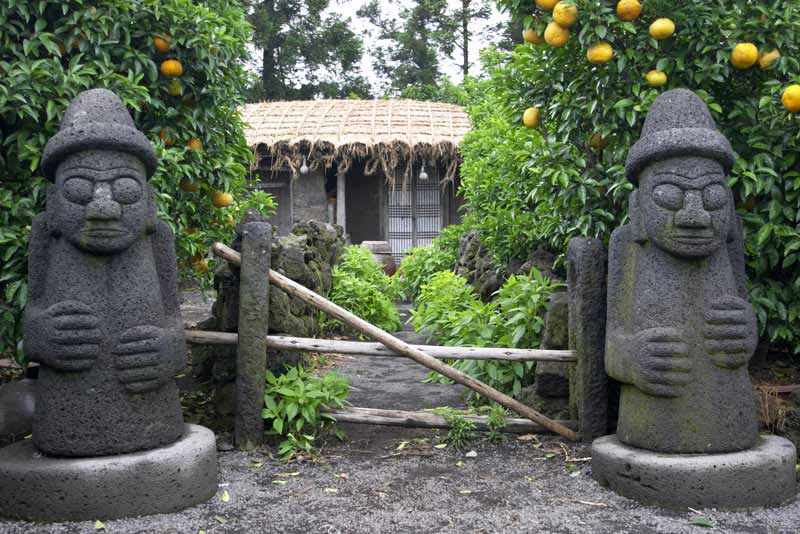
Wander through the Seongeup Folk Village, which is set up like a traditional Jeju Island village with thatch-roofed huts, pig pens, rock walls and a pair of dolhareubang at the village gate.
One legend tells the tale of the king of Pyoknang who floated his three daughters off to Jeju Island in a wooden box filled with cattle, horses and seeds of five different kinds of grain.
The three maidens married the gods Yang-ulla, Ko-ulla and Pu-ulla.
Happy couples founded a new dynasty.
6- Explore Jeju Love Land
Many of Jeju Island’s museums and tourist attractions are run by enthusiastic residents.
The museums and attractions offer an alternative for rainy days and range from mildly whimsical to bizarre.
The most peculiar is Love Land, an outdoor park centred on the topic of sex.
Love Land has a vast collection of sculptures that range from couples kissing and canoodling to pornographic sculptures created by graduates of Hongik University.
Jeju Love Land is at Yeon-dong, 2894-72, 1100-ro, Jeju-si.
7- Visit The Teddy Bear Museum
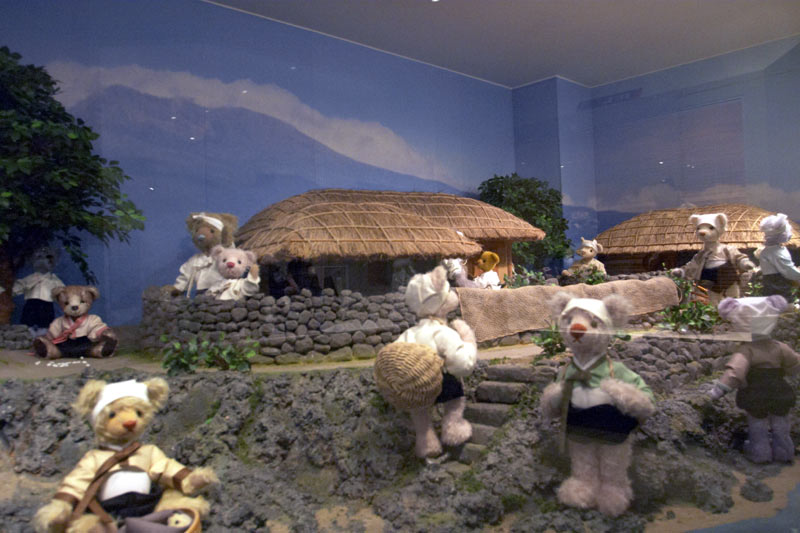
The highly popular Teddy Bear Museum which has over 1200 teddy bears including a Louis Vuitton bear that was sold at auction for 230,000,000 won (approximately $250,000).
The museum’s History section is a nostalgic trip back through time with teddy bears populating scenes arranged to portray major events around the world such as the Apollo moon landing and the 1997 Hong Kong handover.
The Art section has particularly creative, with cute teddy bear versions of famous paintings like The Last Supper and Mona Lisa.
The Teddy Bear Museum on Jeju Island is at 31, Jungmungwangwang-ro110beon-gil, Seogwipo-si, Jeju-do.
8- Learn About Bonsai at Spirited Garden
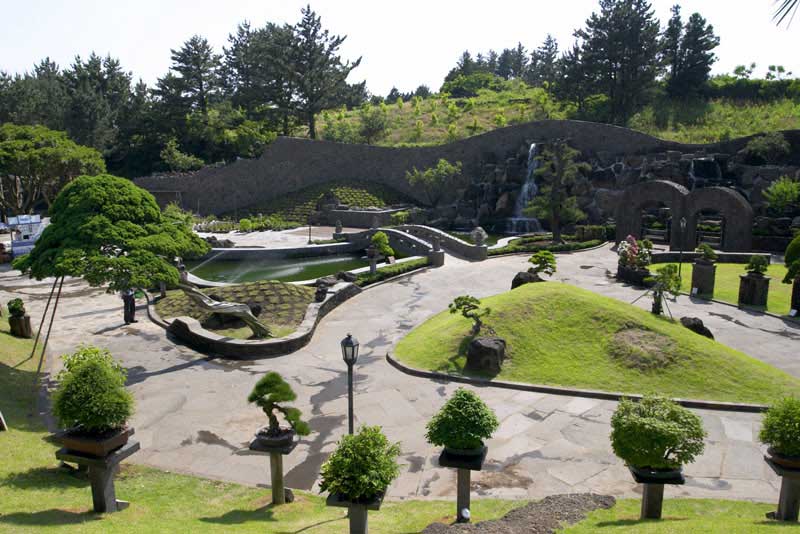
A former tangerine and pig farm is now a vast 39,700-sqm garden with over 400 bonsai.
The Spirited Garden is a work of art with twisted bonsai trees arranged among stone walls, ponds filled with plump koi, bridges and rock waterfalls.
See a 100-year-old Jeju Hwangpi elm tree and a 300-year-old yew tree.
The Spirited Garden is at 675 Nokchabunjae-ro, Hangyeong-myeon, Jeju-si, Jeju-do.
9- Visit The Green Tea Museum
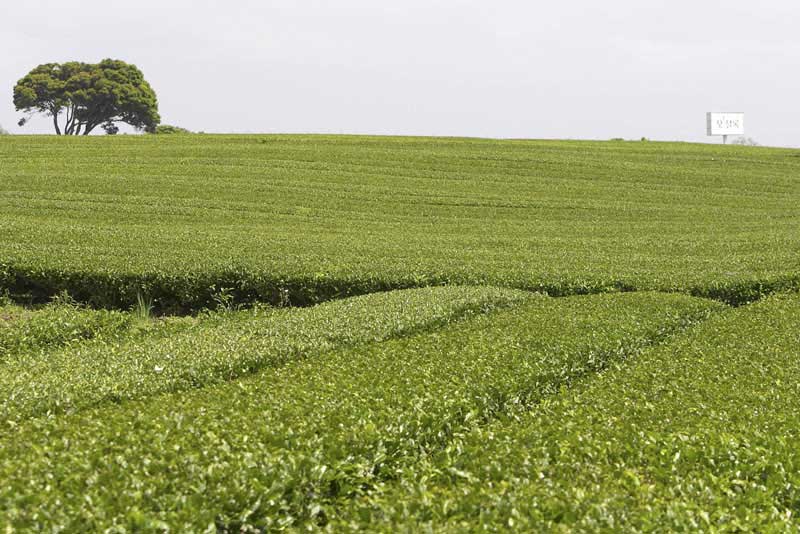
Drive through hectares of green tea plantation to the O’Sulloc Green Tea museum nearby.
The museum tells the history of green tea through display boards.
It’s very Korean with glass cases that have plastic green-tea cakes, sandwiches and drinks.
O’Sulloc Tea Museum is at 15, Sinhwayeoksa-ro, Seogwipo-si, Jeju-do.
10- Hike The Gosalli Forest Trail
In the south, the Gosalli Forest Trail is a lovely hike through the forest and a place to get away from the crowds.
The Gosalli Forest Trail is at Namwon-eup, Seogwipo-si, Jeju-do.
11- Go Diving At Diveland
Go diving at Diveland off the south coast of Jeju Island, where experienced divers and beginners can dive at several locations around the island from a boat or the island.
Other activities are underwater fishing and night diving. If you’re a diving enthusiast, this is one place you must visit.
Diveland is at 29, Bomokpo-ro, Seogwipo-si, Jeju-do
12- See The Exhibits At The Jeju Aerospace Museum
The largest aerospace museum in Asia, Jeju Aerospace Museum has exhibits about anything you want to know to do with aerospace and astronomy.
It’s an educational museum that is terrific for kids, with activities such as how to make air rockets, spitfires, K3 air gliders and learning how to be a pilot.
The six halls house an impressive array of information about aviation and space exploration.
The History of Aerospace guided tour is conducted for free six times a day and is worth joining.
The Aviation Hall is home to we aircraft and an educational exhibition about flying while the Space Hall has replicas of Korea’s ancient astronomical observatory (Cheomseongdae), the Korean rocket (Naro) and other cool interactive exhibits.
Jeju Aerospace Museum is at 218, Nokchabunjae-ro, Andeok-myeon, Seogwipo-si, Jeju-do.
13- Go To The Beach
Being an island, Jeju has several excellent beaches and there are many to choose from if you’re craving sand between your toes.
Sehwa Beach
This beach has white sand, black basalt and is a popular beach on Jeju Island because it’s near the Bellongjang flea market and Sehwa five-day market.
Geommeolle Beach
A small 100 m beach under Udobong Peak, Geommeolle means black sand in the local lingo.
It’s the perfect spot for a stroll at sunrise and the cave at one end of the beach is an interesting feature to explore.
Hagosudong Beach
Known as the Saipan of Korea, Hagosudong Beach has spectacular cliffs and rock formations.
Located on Udo Island, this is a stunning beach with soft sand and shallow wading areas. Facilities include parasols, shower rooms and a local supermarket.
Udo Sanho Beach
Also known as Seobinbaeksa Beach, the colour of the ocean varies from bright emerald to deep sapphire.
The ocean views are fantastic and you almost imagine you’re gazing at the Mediterranean Sea.
Woljeongri Beach
This beach is close to a stretch of cafes and getting there is a scenic drive along the way.
Hwasun Golden Sand Beach
This beach is the one to choose for stunning views as it’s near Sanbangsan Mountain, Yongmeori Coastline and there are several islands off the coast.
There’s a freshwater spring where you can bath in and it’s close to shops, restaurants and hotels.
Samyang Beach
Samyan Beach is known for its black sand, which you can bury yourself in for its therapeutic effect.
14- Learn About The Culture of Jeju Haenyo
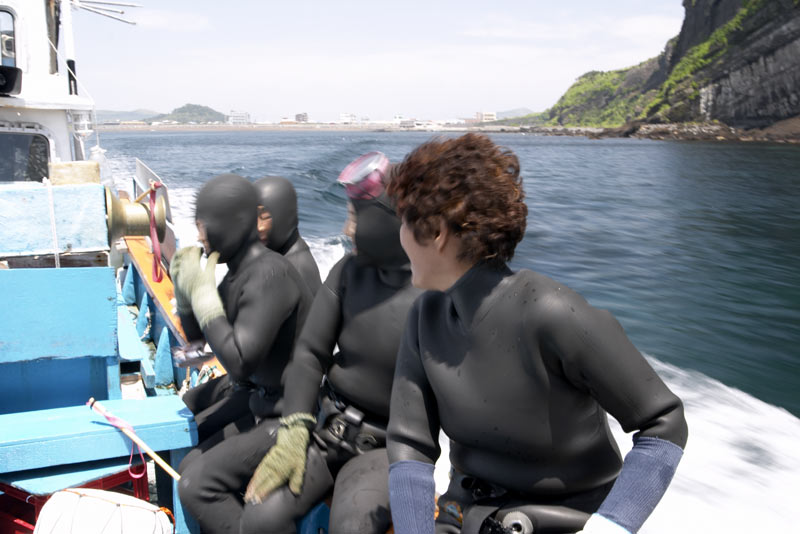
Jeju Island’s haenyo are women who dive into the ocean to collect octopus, abalone, sea urchin, sea slugs, cucumber and seaweed for a living.
The haenyo are athletic sea-ninjas aged between 40 and 80 who can dive up to 20 m into the ocean and hold their breaths underwater for as long as two minutes.
They weigh themselves down with lead tied around their waists, chests and backs; around five to seven kg of lead for the younger women and more for those over 60.
The strongest haenyo usually dive in organised groups of up to 30 women.
A boat drops them several kilometres offshore and they stay out in the ocean for several hours searching for treasures in deep waters but there are some haenyo who choose to work off the beaches.
Hendrick Hamel, one of the seamen escaped and published a journal of his experiences.
He refers to the haenyo as “mermaids” and describes Jeju as having “one thickly wooded high mountain and many barren hills”.
The culture of Jeju Island haenyo is on the UNESCO World Heritage list.
The Jeju Folklore and Natural History Museum has a haenyo section with exhibits of goggles, spades, spears and shell openers. The Jeju Haenyo Museum is dedicated to the haenyo at 26, Haenyeobangmulgwan-gil, Jeju-si, Jeju-do.
15- Play A Round of Golf
Most foreign visitors now stay in a luxury hotel at the Jungmun Tourist Complex which also has restaurants and convention facilities.
And the island is a hotspot for serious golfers.
Thai golfer Thongchai Jaidee collected €333,330 ($527,000) at the Ballantine’s Championship at Pinx Golf Club several years ago.
16- Jeju 4.3 Peace Park
This park is in honour of the men who perished while protecting Jeju Island during the 1948 uprising.
It’s a peaceful place to pay respects while learning about the island’s difficult past.
Jeju 4.3 Peace Park is at 430, Myeongnim-ro, Jeju-si, Jeju-do.
17- Escape To The Jungle At Eco Land Theme Park
Explore the Gotjawal primeval forest while onboard an 1800s Baldwin steam train.
The ride takes you past a lake and into the forest ecosystem to enjoy the flora and fauna.
It’s a great spot if you’re visiting with kids for picnics and there’s a Kid’s Town section they will love.
Eco Land Theme Park is at 1278-169, Beonyeong-ro, Jeju-si, Jeju-do.
18- Be Enchanted By The Jeju Glass Castle
Let yourself be swept away by a magical world of glass at Jeju Glass Castle, which is a unique glass art theme park.
In the park’s exhibition hall and garden, you’ll be impressed that everything is made of glass.
There are six themes and more than 250,000 items including a glass wall, mirror lake, glass bridge and the first labyrinth in the world built completely from glass.
Don’t miss seeing the largest glass diamond and ball in the world as well as glass artworks created by world-famous artists from around the world.
The Jeju Glass Castle is at 462, Nokchabunjae-ro, Jeju-si, Jeju-do.
19- Explore UNESCO World Heritage Caves
Jeju Island is home to several caves that are listed on the UNESCO World Heritage list. Bengdwigul, Manjanggul Cave, Gimnyeonggul, Yongcheondonggul and Dangcheomuldonggul Caves are part of the Geomun Oreum Lava Tube System.
Bengdwigul Cave
The 4,481 m maze-shaped Bengdwigul Cave has one of the world’s most complex lava tube structures and was created by lava that formed a deep underground tube.
The cave has several entrances, lava bridges, columns and tiered caverns.
Bengdwigul Cave is at Jocheon-eup, Jeju-si, Jeju-do.
Yongcheondonggul Cave
Yongcheondonggul Cave is 2470m long and has limestone formations created by lava, such terraces, shelves, waterfalls, and 140 m of lava rolls.
The cave has a lake, stalactites, columns, cave corals, aragonite crystals and is interesting to visit as it also has items left behind by early inhabitants of the area such as pottery and ironware.
Yongcheondonggul Cave is at woljeong-ri, Jeju-si, Jeju-do
Gimnyeongsagul Cave
Gimnyeongsagul cave is in the northeastern part of Jeju Island and has a wide entrance that resembles a serpent’s mouth while the tunnel is like the narrow body of a snake.
Gimnyeongsagul Cave is at 34, Manjanggul-gil, Jeju-si, Jeju-do.
20- Visit the Da Vinci Museum
Learn about Leonardo Da Vinci at the Da Vinci Museum, which is operated under licence and is the only one in South Korea.
The museum has a wealth of information about the life of this great inventor and scientist, including 7,000 pages of the Codex (notebooks of his secrets) and over 200 works.
788 Sallongnam-ro, Andeok-myeon, Seogwipo-si, Jeju-do
Where is Jeju Island?
Jeju Island is located 85 kilometres south of the Korean peninsula.
Jeju Island Accommodation
Shilla Jeju
This is a five-star hotel with rooms from 365,000 won ($400), tel: +82 2 2230 3685. The Mediterranean-inspired resort has hosted world leaders such as Bill Clinton, Mikhail Gorbachev and China’s Jiang Zemin.
Plan Your Trip

Rent A Car – Find the best car rental rates at Discover Cars. They compare car hire companies to provide you with the best deal right now.

Find A Hotel – If you’re curious about this article and are looking for somewhere to stay, take a look at these amazing hotels.

